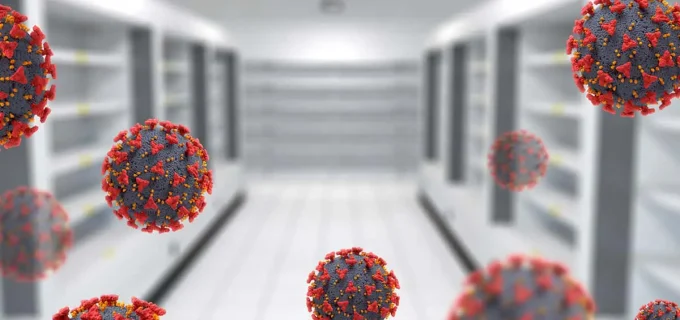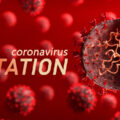Scientific Overview on Mutation and Adaptation
The scientific principles of evolution, mutation, and adaption have withstood the test of time and remain true to this day, for example, around 1810 Jean-Baptiste Lamarck published his theory of evolution (now still known as Lamarckism) which is predicated on the observation that over a period of time spent within a particular environment, living organisms and animals become better adapted to their surroundings and then pass these traits and characteristics onto to their offspring. This was followed in 1844 when Robert Chambers published a paper called ‘Vestiges of the Natural History of Creation’ which clearly stated that all forms of life were in a state of constant transformation and that everything develops from its previous generations to better suit the current environment.
Then, in 1859 Charles Darwin published his seminal work entitled ‘The origin of Species’ within which Darwin first presented his theories on the diversity of life on earth and his still unrefuted theories of evolution, adaptation, and survival of the fittest. Darwin unequivocally explained that evolutionary adaptation is catalyzed by naturally occurring environmental challenges, the trials and tribulations of life that occur around all living beings at any given point in time. Darwin’s theories of evolution are predicated on a process called ‘Natural Selection’ and states that evolution has occurred in the past, is occurring in the present, and that it will continue to occur unabated, into the future. Darwinian Theory also clearly states that biological change always takes place with two basic characteristics:
- Variation: Random genetic variations occur in the DNA of all individual organisms and are subsequently passed on to their offspring.
- Struggle for Existence: There is an existential competition that naturally ensures advantageous traits are preserved and disadvantageous traits are eliminated.
Therefore, within any species (including viruses) individuals specialize at exploiting the environment they occupy in various ways, and over given periods this specialization creates mutation, adaptation, and divergence. These genetically divergent will then ultimately become more successful and eventually replace the preceding variants and become the dominant strain or species.
COVID-19 Situation Update 20th December 2020
As indicated above, all living beings on planet Earth are constantly exposed to environmental challenges, and therefore, all living beings on planet Earth are constantly responding to their environmental surroundings and then mutating, adapting, and evolving to become the dominant genetic derivative.
Therefore, it should come as no surprise that the virus causing COVID-19 has evolved in response to the environmental challenges to which it has been exposed since it departed Wuhan in China sometime during the third quarter of 2019. As we, the human race made the spread of the virus more difficult by enforcing lock-downs, social distancing, travel bans, and the adoption of enhanced infection control measures such as the wearing of face masks, of course, following the natural laws of evolution, a new more contagious strain of the virus has emerged.
In the United Kingdom over the last week, a new dominant strain of the virus causing COVID-19 has emerged, a strain that is significantly more successful in its ability to spread from person to person and place to place and then cause infection and then the following infection spread more efficiently to other uninfected people. This new dominant strain is not marginally more infectious but has already been shown to be at least 71% more contagious than the original strain of the virus and in the UK this new dominant genetic strain has demonstrated that its presence within a community can increase the prevailing ‘R Number’ (reproductive rate or doubling rate) from where it currently stands by a factor ranging between 0.39 to 0.93. Whilst the scientific data is still emerging, the new strain of COVID-19 virus is believed to have become more efficient, more contagious, more virulent by mutating and adapting in the following ways:
- That COVID positive individuals with this new more infectious strain of the virus will shed significantly more contagious viral particles than the previous strains
- That a significantly lower viral load is of this strain is required for re-infection
- That this new variant strain of the COVID-19 can remain airborne and therefore potentially infectious for longer periods of time
- That this new dominant strain can remain viable on objects and surfaces for longer periods of time
The emerging scientific evidence is also strongly indicating the following courses of action need to be taken by all other countries around the world as contagion and infection with this new genetic strain of COVID-19 needs to be contained immediately as it would be incredibly foolish to assume that this highly infectious variant of the virus has been contained within the United Kingdom and has not already spread by air-travel to other parts of the world where it will also become the dominant more dangerous variant of the disease. Therefore, there are two basic strategies that all countries, regions, and communities should consider without further delay:
- Enhanced travel restrictions and should it have already arrived beyond the UK stricter social distancing.
- Much higher standards of hygiene underpinned by increased levels of cleanliness and disinfection.
How to Mitigate the Risk of Infection from the New Strain of Coronavirus (COVID-19)
Following on from the COVID-19 Situation Update recently published by ‘Big Red’ it has been met with further overwhelming demand for information on how the Citizens of Singapore can best protect themselves against the inevitable arrival of the new variant strain of the virus within the local communities.
In terms of risk; the risk of this derivative strain of virus reaching other countries around the world is almost 100% as despite the UK being highly evolved and advanced in terms of the Genome Project and the rapid identification of new viral variants, it is almost certain that this dominant variant strain has already reached other countries around the world and in due course, will become the globally dominant strain.
Blessed with the benefit of hindsight, we already know how this virus spreads and we already know how to tackle it, but the emergence of this variant strain just means we have to do more of the things we were already doing and do them better and more efficiently. In short, as a species, humankind now needs to adapt and evolve in response to the arrival of this more contagious strain of COVID-19. In this regard, we have requested the ‘Big Red’ resident Public Health expert Prof. Martin A. Blake to address the frequently asked questions (FAQ’s) we are receiving from our customers and the public:
Question: When was the new variant of the COVID-19 virus discovered?
Answer: The first time this genetic variant of the COVID-19 virus was identified in the UK was around the 14th December 2020. However, the virus is reproducing quickly and is already moving from place to place, country to country and will almost certainly become the dominant strain around the world.
Q: Where did this new variant come from?
A: The genetic origins of this new variant form of the COVID-19 virus were created by natural selection following a process of genetic mutation, adaptation, and evolution by the virus itself. However, the exact geographical origins of remain unknown, but it was first identified in the UK as they have one of the most advanced genomic sequencing programs in the world.
Q: Is it likely that this new variant strain of the COVID-19 virus will reach Singapore and the surrounding regional countries in SE Asia?
A: The unfortunate truth is that this variant strain of the virus has probably already arrived within the region as it was probably already in circulation for some time before it was identified and genetically ‘tagged’ as a more contagious strain. Based on this knowledge, all we can do now is defend ourselves and the Citizens of Singapore against the further spread of this more dangerous strain of the COVID-19 virus.
Q: What actually makes this strain of the COVID-19 virus more dangerous?
A: This new dominant strain of the virus is simply more contagious, meaning that it is much easier to become infected by this strain than the earlier strains.
Q: What should Governments do to protect us from this new strain of the COVID-19 virus?
A: The first line of defense will have to be based on enhanced travel restrictions and should it have already arrived beyond the UK into SE Asia, then much stricter social distancing regimes.
Q: What can we as responsible Citizens of Singapore do to defend ourselves against the spread of this more infectious strain of the COVID-19 virus?
A: Other than increasing social distancing and decreasing the level of physical interaction that we have with other people in environments beyond our own homes, there is only one effect that we can deploy in defense against this new strain of the COVID-19 virus and that is to observe much higher standards of hygiene and infection control by increased levels of cleanliness and disinfection.
Q: What is the overarching disinfection and infection control strategy that organizations, business premises, mass transit facilities, healthcare facilities, retailers, and even domestic premises should observe to mitigate the risks of cross-contamination by the new variant of virus and thereby avoid future disease transmission?
A: From a cleaning and disinfection perspective, the actual basic principles of hygiene and infection control regarding this more infectious strain of the COVID-19 virus remain the same: ‘Clean – Kill – Protect – Maintain’. However, because the virus is now more easily transmissible and thus more contagious, we just need to follow these basic, integrated principles more thoroughly, more diligently, and more often!
What are the first steps to be taken?
A: As always, if you are dealing with a large, busy property with many areas that are difficult to reach, the first step is contacting a reputable contractor such as ‘Big Red’ and let them guide you on the appropriate treatments that best suit your needs and your budget.
Q: How does the ‘Clean – Kill – Protect – Maintain’ strategy actually work in practice?
A: We must always assume that there are already contagious viral particles present in the premises we are responsible for; therefore, we should always adhere to the following cleaning and disinfection protocol:
- Thoroughly ‘Clean’ and sanitize the areas in question in preparation for disinfection. When cleaning ‘Big Red’ always recommends using an appropriately diluted detergent and sanitising agent included on the EPA’s List N: Disinfectants for Use Against SARS-CoV-2.
- Once the area is clean from dirt, debris, and all organic residues, it is essential that every single infectious viral particle is completely and totally eradicated. To achieve this level of antimicrobial kill, ‘Big Red’ advocates the use of ‘BRMist’ which is a nebulized, ionized, Hydrogen Peroxide solution. Only a product such as ‘BRMist’ can deliver what is known as a ‘Six Log Kill’ which means that it is guaranteed to kill 99.9999% of all known pathogens, including the new dominant strain of COVID-19.
- Once all the areas, objects and surfaces, fabrics, and carpeted areas have been rendered effectively sterile by a single treatment of ‘BRMist’ the entire area must then be thoroughly protected from recontamination and reinfection. At this stage of the process ‘Big Red’ suggests treating the entire area (including other porous and non-porous surfaces) with a residual antimicrobial surface protection treatment such as ‘BRShield’, which is an organo-silane based, a broad-spectrum antimicrobial treatment that chemically bonds to all surfaces (including textiles and fabrics) at the molecular level and endows all treated surfaces with semi-permanent antimicrobial properties on a 24/7 basis for 180 days following the application.
- Finally, ‘Big Red’ simply advise on ‘Maintaining’ the entire area with basic routine housekeeping procedures being carefully and diligently followed to maintain all the treated areas in an optimal condition for infection control purposes.
Related posts:
- COVID 19: Cleaning and Disinfecting Protocols
- How to Leave Coronavirus Behind When You Come Home
- How to Clean and Disinfect Your Home: Limiting Coronavirus Exposure
- New Variant Strains of the Coronavirus (Covid-19) – What You Should Know





